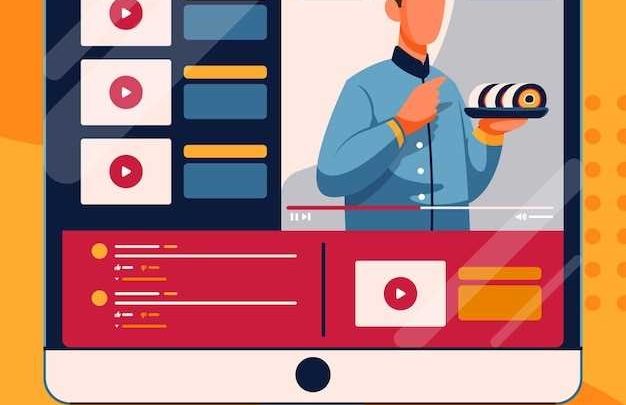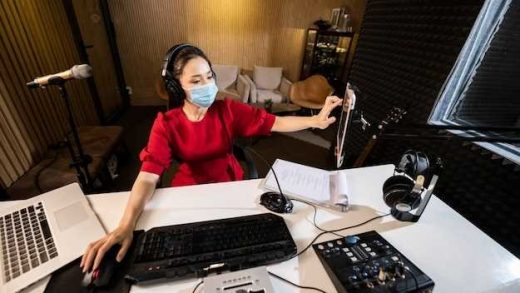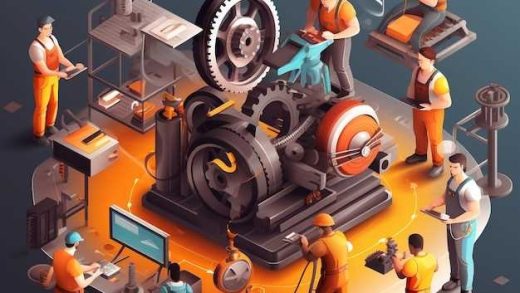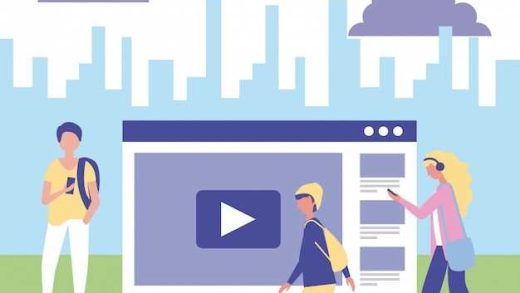
In this era of dynamic and innovative storytelling, the world of animation has emerged as a powerful medium that captivates audiences across diverse platforms. Constantly pushing boundaries, animation is no longer confined to traditional formats but has evolved into a multifaceted art form encompassing various genres and styles. As technology advances, so too does the potential for creators to craft immersive and visually stunning narratives that leave a lasting impact on viewers.
The changing landscape of animated content reflects not only the evolution of artistic techniques but also the shifting preferences and expectations of audiences. With the rise of streaming services and social media platforms, the demand for engaging and captivating animations has never been higher. Animation has become more than just a source of entertainment; it has become a means of expression, a catalyst for thought-provoking discussions, and a vehicle for inspiring change.
Within this ever-expanding realm of animated storytelling, trends emerge and fade, making it crucial for creators and enthusiasts to stay up-to-date with the latest developments. From the mesmerizing beauty of hand-drawn animations to the endless possibilities of computer-generated imagery, the world of animation is a vast playground where creativity knows no bounds. Whether it’s the exploration of new animation techniques, the integration of live-action elements, or the fusion of traditional storytelling with cutting-edge technology, the future of animated content holds endless prospects for both creators and audiences alike.
This insightful journey into the world of animation delves into the captivating trends that have shaped the industry and forecasts the transformative future that lies ahead. Through a fresh lens, we delve into the concepts of visual storytelling, examining how animation has become a powerful tool for cultivating empathy, education, and entertainment. From the nostalgic charm of classic animation to the mind-bending wonders of virtual reality, join us as we explore the forefront of animated content, where imagination knows no boundaries and the possibilities are truly limitless.
The Rise of 3D Animation: Blurring the Lines of Reality
In today’s rapidly evolving world of visual storytelling, a new era has dawned upon us. 3D animation has emerged as a revolutionary medium that is reshaping the way we perceive reality.
Unveiling a New Dimension
Gone are the days when animation was limited to two-dimensional drawings and sketches. With the advent of 3D animation, artists and filmmakers have been bestowed with the power to bring their visions to life in a way that was once unimaginable.
This new era of animation has blurred the lines between the real and the virtual, taking us on a journey where the boundaries of reality no longer confine creativity. From breathtaking visuals to realistic characters, 3D animation has opened up a world of possibilities that continues to captivate audiences across different mediums, including movies, video games, and advertising.
Pushing the Boundaries of Visual Storytelling
One of the key advantages of 3D animation is its ability to create immersive and engaging narratives. With its lifelike characters, detailed environments, and seamless integration of special effects, 3D animation elevates storytelling to a whole new level. It allows filmmakers to craft visually stunning worlds, transcending the limitations of traditional animation techniques.
Moreover, the rise of 3D animation has also brought about a transformation in the way stories are told. With the ability to manipulate time and space, animators can manipulate the laws of physics and bend reality to fit their creative vision. This newfound freedom has sparked a surge in experimental storytelling techniques, pushing the boundaries of what was once considered possible.
- Realistic physics simulations
- Seamless integration of live-action footage
- Virtual reality experiences
- Interactive storytelling
- Augmented reality applications
As 3D animation continues to evolve, it poses exciting opportunities for artists and content creators to delve into unexplored realms of creativity and innovation.
In conclusion, the rise of 3D animation has ushered in a new era of storytelling, blurring the lines between reality and imagination. With its ability to create lifelike visuals and push the boundaries of traditional animation, 3D animation has become a powerful tool in the hands of artists, enabling them to captivate audiences like never before.
AI and Animation: Exploring the Intersection of Technology and Creativity
In this section, we delve into the fascinating realm where technology and creativity converge – the interaction between artificial intelligence (AI) and the captivating world of animation. This emerging field explores how AI advances are transforming the creation, production, and viewing experience of animated content.
Virtual and Augmented Reality: Revolutionizing the Animated Experience
In this section, we delve into the fascinating world of virtual and augmented reality, exploring how these innovative technologies are transforming the way we perceive and engage with animated content. By seamlessly blending the virtual and real worlds, virtual and augmented reality offer users an immersive and interactive experience like never before.
Breaking the Boundaries of Animation
Virtual and augmented reality have revolutionized the way animated content is created, consumed, and experienced. These technologies break the boundaries of traditional animation by allowing users to step into a virtual world and interact with animated elements in real-time. Through headsets, users can explore stunningly realistic animated environments, manipulate virtual objects, and even become a part of the animated narrative.
This immersive animated experience offered by virtual and augmented reality pushes the creative limits of content creators and opens up a new realm of possibilities. It enables them to craft narratives that are not bound by the constraints of traditional mediums and engage users on a whole new level.
Enhancing Storytelling through Immersion
One of the most impactful aspects of virtual and augmented reality in animation is the ability to enhance storytelling through immersive experiences. By being fully immersed in a virtual realm, viewers can feel like active participants in the animated narrative, fostering a deeper emotional connection and engagement.
Through the strategic use of virtual and augmented reality technologies, storytellers can transport audiences to fantastical worlds, allowing them to witness the story unfold from unique perspectives. By creating a sense of presence and agency, virtual and augmented reality experiences make storytelling more captivating and unforgettable.
Furthermore, virtual and augmented reality also enable animators to experiment with new narrative techniques, such as guiding the viewer’s attention or presenting multiple storylines simultaneously, amplifying the storytelling possibilities in the animated medium.
In conclusion, virtual and augmented reality are pushing the boundaries of animated content, offering users an unprecedented level of immersion and interactivity. These technologies have the potential to reshape the animation industry, driving innovation and creating unforgettable experiences for both content creators and audiences alike.
Diversity in Animation: Breaking Stereotypes and Embracing Inclusivity
In today’s ever-evolving world, the concept of diversity in animation has gained significant importance. This section aims to explore how the industry is breaking stereotypes and embracing inclusivity, moving towards a more representative and inclusive form of storytelling.
Challenging Preconceived Notions
Traditionally, animation has been dominated by certain ideas and stereotypes, often perpetuating narrow and limited representations of characters and cultures. However, there is now a growing recognition of the need to challenge these preconceived notions. Animators and creators are pushing the boundaries, bringing to life characters from all walks of life, including those from diverse racial, ethnic, and gender backgrounds.
This shift towards breaking stereotypes is not only a reflection of the desire for more authentic and inclusive storytelling but also a response to the demands of a diverse and global audience. People from different backgrounds want to see their stories and experiences represented on screen in a way that feels genuine and respectful.
Embracing Inclusivity in Narratives
Another aspect of diversity in animation is the increasing focus on embracing inclusivity in narratives. This involves introducing characters with disabilities, exploring LGBTQ+ themes, and depicting a wider range of body types. By doing so, animation is becoming a platform for challenging societal norms and fostering empathy and understanding among viewers.
Moreover, the embrace of inclusivity allows for the creation of more complex and nuanced storylines. By going beyond traditional tropes and archetypes, animators have the opportunity to explore diverse perspectives and tackle important social issues. This not only enriches the storytelling in animation but also empowers individuals who have historically been underrepresented in the industry.
In conclusion, diversity in animation is about breaking stereotypes, challenging preconceived notions, and embracing inclusivity in all its forms. It is about creating a space where everyone’s stories can be told and celebrated. As the industry continues to evolve, it is crucial for animators and creators to prioritize diversity and inclusivity, ensuring that animation becomes a powerful tool for representation, understanding, and acceptance in our increasingly diverse world.
Environmental Consciousness in Animation: Promoting Sustainability Through Storytelling
Embracing the importance of preserving the planet for future generations, animation has emerged as a powerful medium for promoting environmental consciousness and sustainability. Through captivating storytelling and visually stunning imagery, animated content encourages viewers to connect with the natural world and inspires them to take action in preserving it. This section explores the various ways in which animation fosters environmental consciousness and advocates for sustainable practices.
1. Depicting the Interconnectedness of Ecosystems
One of the key strengths of animation is its ability to vividly portray how every living being and natural element is interconnected in complex ecosystems. Through dynamic visuals and compelling narratives, animated content can demonstrate the delicate balance between different species and their dependence on a thriving environment. By depicting these connections, animation creates awareness around the impact of human activities on ecosystems and highlights the need for sustainable practices to maintain the delicate balance of nature.
2. Inspiring Empathy and Emotional Connection
Animation has the power to evoke emotions and create deep empathy among viewers, which can be harnessed to promote environmental consciousness. Through relatable characters and engrossing storylines, animated content can effectively convey the repercussions of environmental degradation and the urgency of sustainable actions. By fostering emotional connections between the audience and the natural world, animation motivates individuals to make conscious choices that contribute to the preservation of our planet.
- Promoting renewable energy: Animated content can highlight the benefits of renewable energy sources, such as solar and wind power, and showcase innovative solutions for sustainable energy production.
- Raising awareness on pollution: Animation can address the issue of pollution and its detrimental effects on the environment, encouraging viewers to adopt eco-friendly practices and reduce waste.
- Advocating for conservation: Through storytelling, animation can promote the conservation of endangered species and the protection of natural habitats, inspiring viewers to get involved in conservation efforts.
By leveraging its creative potential, animation serves as a catalyst for positive change and plays a crucial role in promoting sustainability. It educates, engages, and inspires audiences to embrace environmental consciousness and take action to create a more sustainable future.
Animation in Education: Enhancing Learning and Engagement Through Animated Content
In the realm of academic instruction, the integration of innovative and captivating teaching techniques plays a crucial role in captivating students’ attention and fostering active learning. Animation, with its visually stimulating and engaging nature, has emerged as a powerful tool in modern education. Through the use of animated content, educators can enhance learning experiences, promote information retention, and create an environment that encourages participation and engagement among students.
1. Visualizing Complex Concepts
One of the key benefits of utilizing animated content in education is its ability to break down complex concepts into easily understandable visual representations. By employing animated visuals, instructors can illustrate abstract ideas, intricate processes, and scientific phenomena with clarity and simplicity. The dynamic nature of animation allows students to visualize concepts in action, bridging the gap between theoretical knowledge and real-world application. With animated content, students are more likely to grasp and retain complex information, leading to enhanced comprehension and conceptual understanding.
2. Fostering Creativity and Imagination
Animated content in education nurtures creativity and imagination in students by presenting information in a visually appealing and imaginative manner. Animation provides the opportunity for educators to present educational material in a storytelling format, allowing students to connect emotionally with the content. By combining colorful visuals, captivating characters, and engaging narratives, animated content stimulates students’ imagination and encourages them to think creatively. This interactive approach cultivates critical thinking skills, problem-solving abilities, and a deeper appreciation for learning.
In conclusion, when incorporated effectively, animated content serves as a powerful tool for enhancing learning and engagement in education. By visually representing complex concepts and sparking creativity, animated content not only captures students’ attention but also facilitates a deeper understanding of various subjects. As technology continues to advance, the possibilities for utilizing animation in education are limitless, promising an exciting future for animated educational content.



